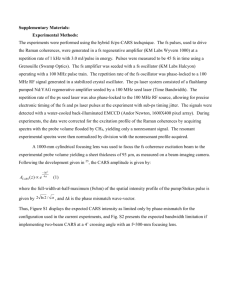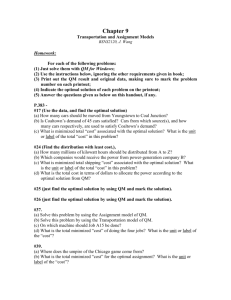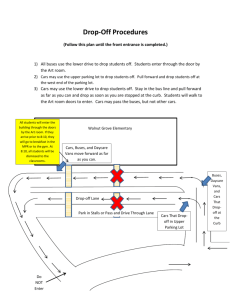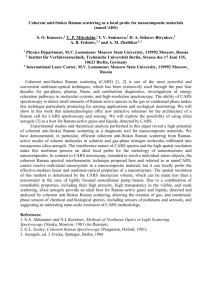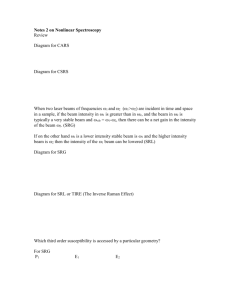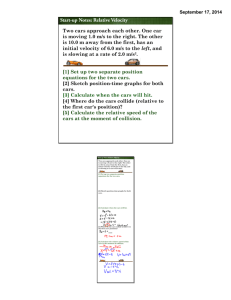авб and гадб quenching адб
advertisement
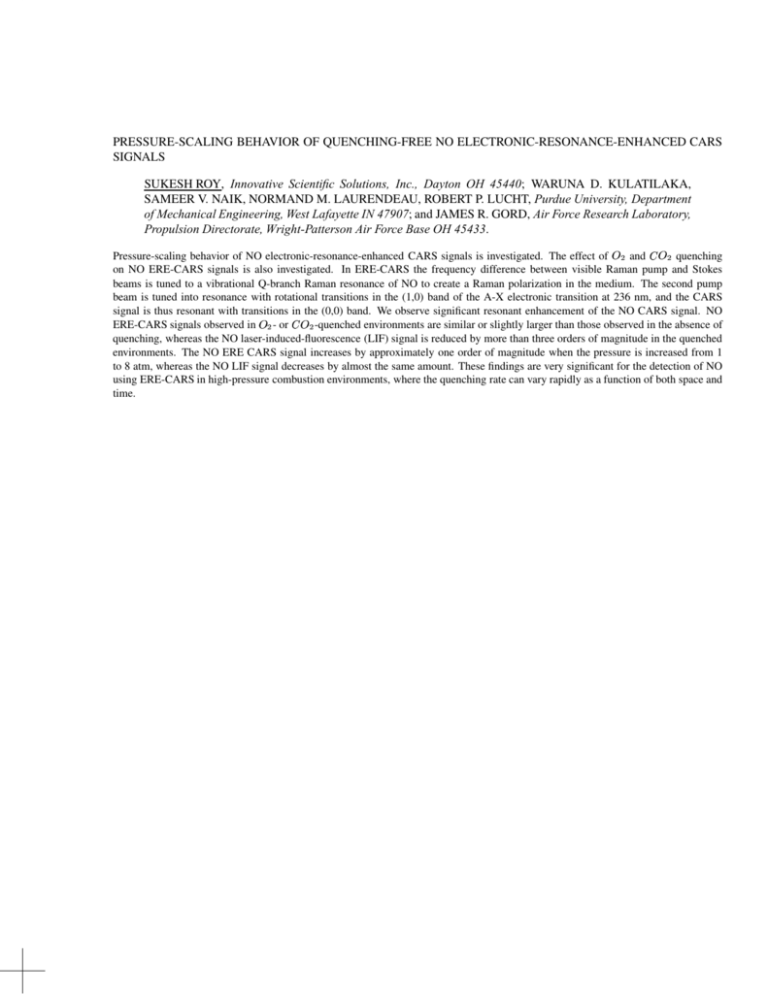
PRESSURE-SCALING BEHAVIOR OF QUENCHING-FREE NO ELECTRONIC-RESONANCE-ENHANCED CARS SIGNALS SUKESH ROY, Innovative Scientific Solutions, Inc., Dayton OH 45440; WARUNA D. KULATILAKA, SAMEER V. NAIK, NORMAND M. LAURENDEAU, ROBERT P. LUCHT, Purdue University, Department of Mechanical Engineering, West Lafayette IN 47907; and JAMES R. GORD, Air Force Research Laboratory, Propulsion Directorate, Wright-Patterson Air Force Base OH 45433. Pressure-scaling behavior of NO electronic-resonance-enhanced CARS signals is investigated. The effect of and quenching on NO ERE-CARS signals is also investigated. In ERE-CARS the frequency difference between visible Raman pump and Stokes beams is tuned to a vibrational Q-branch Raman resonance of NO to create a Raman polarization in the medium. The second pump beam is tuned into resonance with rotational transitions in the (1,0) band of the A-X electronic transition at 236 nm, and the CARS signal is thus resonant with transitions in the (0,0) band. We observe significant resonant enhancement of the NO CARS signal. NO ERE-CARS signals observed in - or -quenched environments are similar or slightly larger than those observed in the absence of quenching, whereas the NO laser-induced-fluorescence (LIF) signal is reduced by more than three orders of magnitude in the quenched environments. The NO ERE CARS signal increases by approximately one order of magnitude when the pressure is increased from 1 to 8 atm, whereas the NO LIF signal decreases by almost the same amount. These findings are very significant for the detection of NO using ERE-CARS in high-pressure combustion environments, where the quenching rate can vary rapidly as a function of both space and time.


